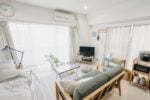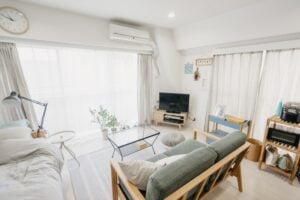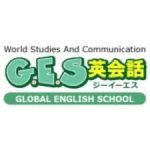
Japanese kanji are Chinese characters that have been adopted into the Japanese writing system. Kanji is used alongside hiragana and katakana to form written Japanese, with each character representing a unique meaning and pronunciation.
Kanji was introduced to Japan from China in the fifth century and have since adapted to the Japanese language. There are thousands of kanji characters. To be considered literate in Japanese, you are expected to be able to read around 1,500-2,000 characters, a daunting task for most foreigners, admittedly.
Learning kanji can be challenging for non-native speakers, as each character has its own stroke order and meaning. However, the study of kanji is essential for anyone interested in reading and writing Japanese, as it allows for a deeper understanding of the language and culture.
While past articles have argued for studying kanji radicals, in this article, I’d like to explore the history of kanji in Japan and how it has shaped Japanese culture.

How does kanji work?
Kanji characters can be read in several different ways depending on the context and the specific character being used. While in Chinese most characters have a single reading, Japanese characters have multiple readings dependent on the word and the way the character is read.
On’yomi (Chinese reading) is the pronunciation of the kanji as it was originally pronounced in Chinese. Many kanji have multiple on’yomi readings, and these readings are often used in compound words and expressions. For example, the character for water (水) is read as ‘sui’, such as in the word ‘suiyoubi’ (水曜日) or Wednesday.
Kun’yomi (Japanese reading) is the pronunciation of the kanji as it has been adapted to fit the Japanese language. Many kanji have multiple kun’yomi readings, and these readings are often used for standalone words or as part of compound words. For example, when you are using the character for water (水) to refer to water itself, you will read it as ‘mizu’. So, in the sentence “水が好き”, it is read as “mizu ga suki”, meaning “I like water”.
The last reading is called Nanori (special readings). Some kanji have special readings that are used only for personal names. These readings are not based on either the on’yomi or kun’yomi readings of the kanji and can sometimes be difficult to predict.
To determine how to read a particular kanji, you need to look at the context in which it appears. If it is part of a compound word, you may need to use the on’yomi reading, while if it is a standalone word, you may need to use the kun’yomi reading.
Why does Japan use Chinese characters?
The history of kanji in Japan goes back to the fifth century when Chinese characters first came to Japan. At that time, Japan did not have its own writing system, and kanji were used to write Japanese words phonetically based on the sound of the Chinese characters.
Over time, kanji evolved to fit the unique characteristics of the Japanese language, with many characters acquiring new meanings and pronunciations. By the eighth century, kanji had become an essential part of the Japanese writing system, alongside two native Japanese scripts: hiragana and katakana.
During the Heian period (794-1185), the use of kanji became more standardized with the creation of a comprehensive kanji dictionary and the establishment of rules for their use in written Japanese. It was around this time that hiragana and katakana (as mentioned before) also developed.
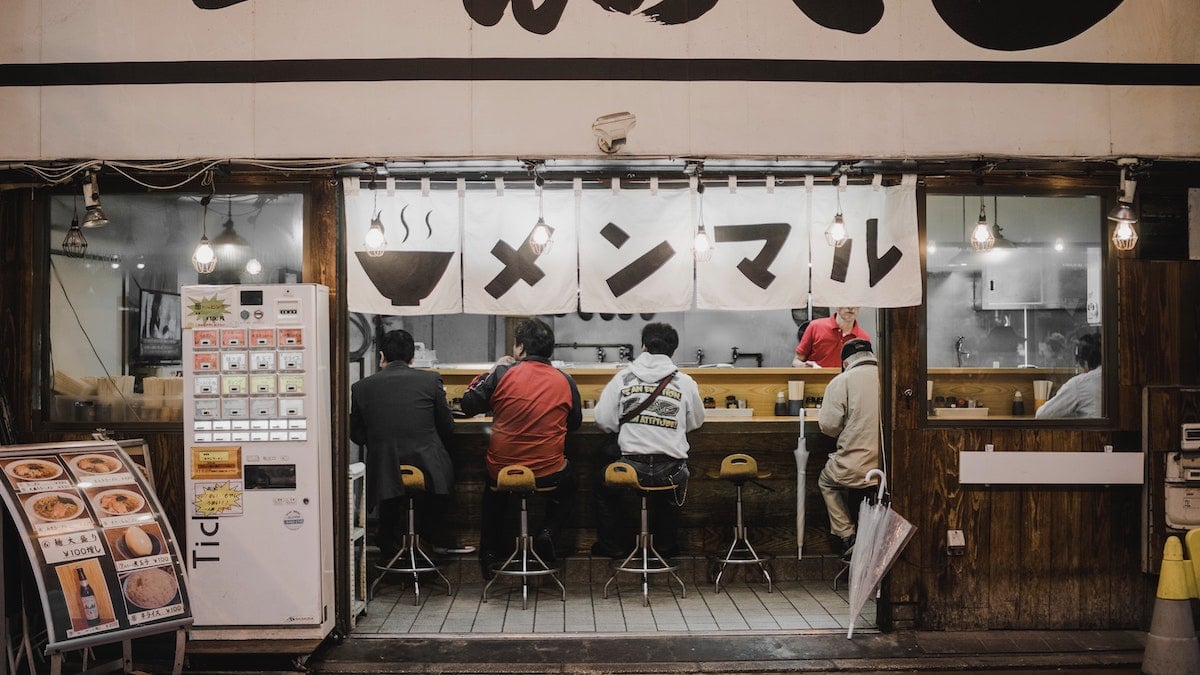
Hiragana was created by Japanese women of the imperial court who needed a way to write in Japanese using a script that was easier to learn and write than kanji, which were primarily used by men. At this time, the use of kanji for women was prohibited, leading to the use of hiragana for things like female names.
Katakana, on the other hand, was developed by Buddhist monks who needed a way to write religious texts, often from foreign languages like Sanskrit, in a script that was distinct from kanji. Katakana is also a syllabic script, but it is used primarily for writing foreign words and onomatopoeic expressions in Japanese. Like hiragana, Katakana consists of forty-six characters.
However, literacy remained limited to the nobility and upper classes, and it was not until the Meiji period (1868-1912) that widespread literacy became a national goal. During the Meiji period, the government introduced reforms to the education system and simplified many kanji characters, making them easier to learn and write.
The Beauty of Kanji
While you may sit in your Japanese classroom frustrated with so many complicated characters, it is understandable if you have the thought “Why can’t Japanese people just use hiragana?” However, kanji has had a profound impact on the Japanese language and culture, and it continues to shape Japanese society today.
Kanji has a major influence on the Japanese mindset, shaping the way that Japanese people think, communicate, and interact with the world around them. It is easy to look at a phonetic system like the Roman characters used in English as simply a tool for the language, but kanji is not just an extension of the Japanese language; it is a critical foundational element.
In linguistics, there are two distinct forms of writing systems: phonographic systems and logographic systems. Essentially, writing systems that rely on characters that represent sounds (such as Japanese hiragana, Korean hangul, or the English alphabet) are phonographic, while logographic systems are pictorial based, meaning they represent an idea or concept, not just a phonetic component.
Much linguistic research in history has focused more on phonographic language, and this perspective tends to view phonetic systems as superior. Linguists throughout history (and some still today) tend to cling to the idea that the alphabet is more efficient and consider pictographic systems as primitive or undeveloped systems that express simply objects and actions instead of complex symbols and abstract notions.
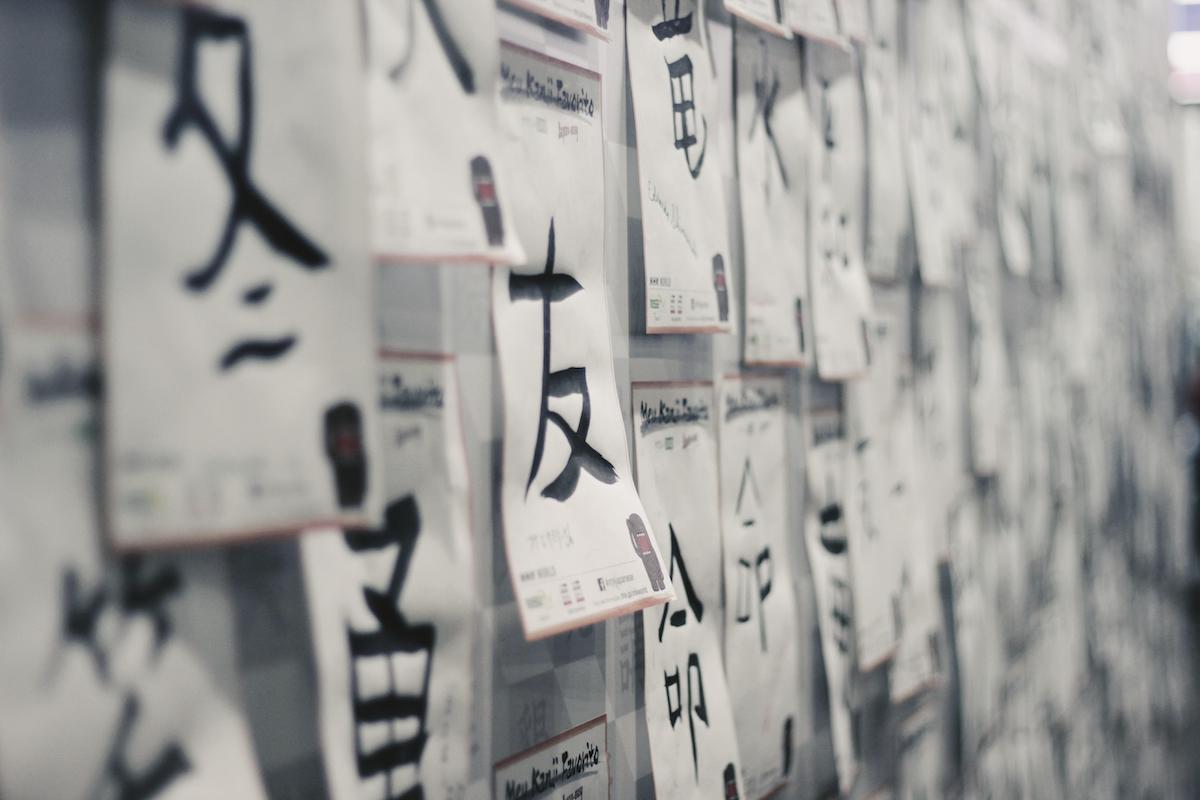
In my opinion, this is a flawed view of kanji itself. Some researchers, such as Beatriz Garza-Cuaron and Hyounjoo Shim, have adopted a different view of kanji, breaking down its functions as denotational (direct meaning) and connotational (implication or indirect meaning). This means that kanji incorporates both a direct meaning that is the meaning you would find in a dictionary as well as its associations with related concepts.
Connotative Meanings of Kanji
Let’s take a look at the word 疾病 (disease), which is read as shippei in Japanese or jíbìng in Chinese. The character 疾 (sickness) is made up of the radicals 疒 (getting sick) and 矢 (arrow), which is an image of an arrow piercing a person. The second character in the word, 病 (disease), contains the radicals 疒 (getting sick) and 丙 (south/fire). Its original oracle-bone image shows a person sweating in a bed with the association of a hot southern region or fire. Here, you can quickly see how things like fire or south get associated with heat, which then becomes associated with the image of someone lying down feverish, creating an abstract connotative meaning.
However, the use of kanji goes further to adjust its connotative meaning through association. Let us take two different words as an example. Karai/からい means hot or spicy, while tsurai/つらい means tough or painful. However, both of these words are written as 辛い with the 辛 kanji.
You can then see that word in a variety of words such as 辛党 (person who is fond of alcohol), 辛気 (fretfulness or irritation, associated with the word shinki/心気 meaning mentality or mood), 辛労 (hardship or toil), and 辛勝 (narrow victory). When you look back to its pictographic origin, you see it started as a picture of a tool (a carving knife/chisel) rooting in the character 䇂, but it has also been used in the proto-sino-tibetan context for “liver/heart/bile”.
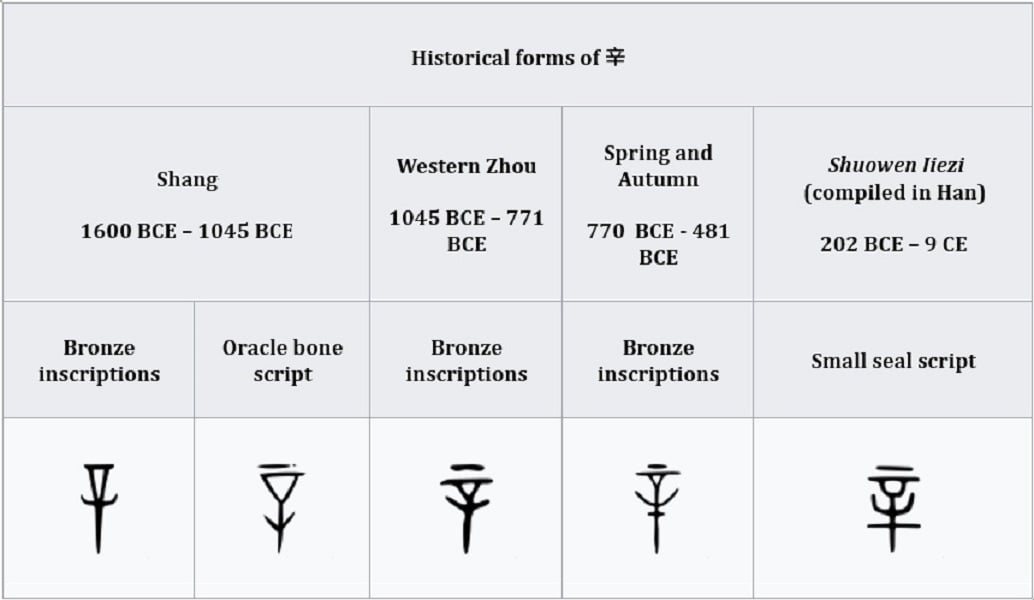
So, while there is a direct meaning of spicy or painful, you can see there’s also an indirect implication that shapes the word around the idea of struggling and suffering. Although the historical philosophical implications of that might be a bit too complex for this article.
The point of this is that kanji, in terms of semiotics, is significantly more contextual than alphabetical letters because of the advantage of being able to convey a direct meaning through associations. As you study the kanji, you are able to create images and visuals directly affecting the reader’s perception in a way alphabets cannot achieve.
For example, in the word for wind or 風/kaze. In English, it is hard to really picture anything when you just see the word “wind”. You might be able to associate the sound with ideas of wind, but the script itself plays no role in these associations. In contrast, 風, rooting from the character 鳳, shows its original phonetic radical 凡 with a bird 鳥, creating an immediate image of a bird flying through the air, which can be easily seen in its glyphic origins. Although the modern word instead has 虫 or insect in place of 鳥, although the affect is similar.
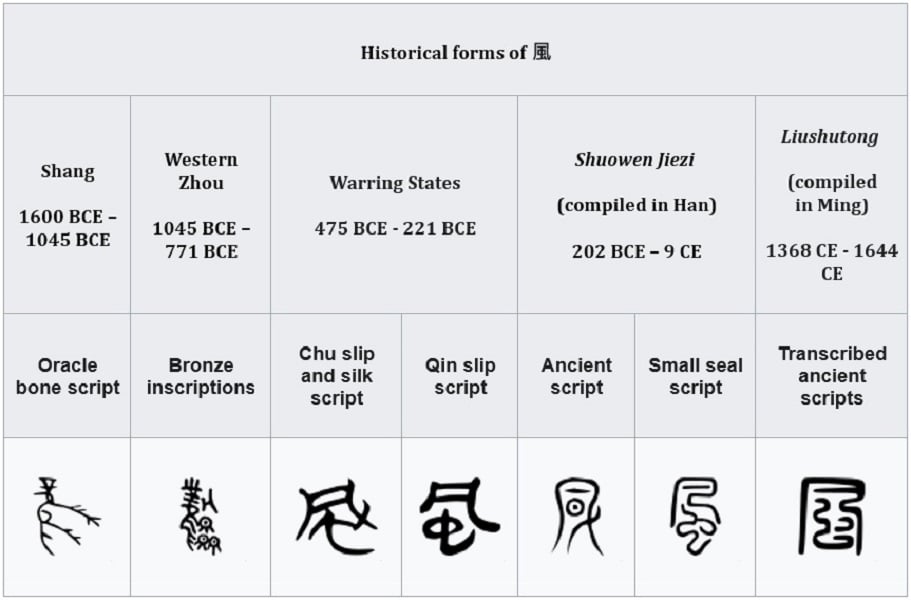
The cognitive process of interpreting kanji is formed by the combination of radicals and their brush strokes. This means the use of kanji combines the reception of what you see (the characters embedded into the character) paired with your semantic memories that occur while interpreting its meaning.
The Difficulty of Kanji Simplification
This is also one of the major arguments against kanji simplification across the world. Kanji simplification dates back to the Japanese script reform (国語国字問題, national language and script problem) in the Meiji Era (明治時代) in 1900. A list of 1,850 official kanji for modern use (当用漢字表) was formed that later became the modern list of regular use kanji (常用漢字).
I think it is quite easy to see why simplifying kanji lists is beneficial. For one, learning thousands of complex characters can be hard and create a natural barrier to literacy. Likewise, when quickly writing (such as in note-taking), having a lot of very complex characters might slow a person down. I am sure almost every student in school would love to have easier and simpler kanji lists.

I won’t get into all the different arguments for the pros and cons of kanji simplification. If you are interested in that debate, I recommend looking into it more. I would instead like to point out the biggest problem I see in this process, which is the changing connotative meanings.
In the process of kanji simplification, many characters considered obsolete were replaced with other characters that contain different connotative meanings has been a problem. It also includes simplification of radicals, but that is seen more predominately in modern Chinese. While it has occurred many times in both languages, the Meiji Era simplification focused largely on the simplification on the list of common use kanji.
One example of this process can be seen in the word for handicapped persons (しょうがいしゃ/shougaisha). Under the joyo kanji list (the compiled in the Meiji era), the word was written as 障碍者, containing the characters 障, meaning hinder/harm, 碍, meaning obstacle, and 者, meaning person. In this case, you get the strong influence that they are a person hindered by an obstacle, being quite an empathetic portrayal.
However, in modern day, the character 碍 has been removed from common use, and so using the character 害 in its place (due to the same phonetic meaning) has changed the modern word to 障害者. The problem with this change is that the character 害 also carries the derogatory connotative meaning of “harm or evil influence,” which quickly changes the implication of the word from the positive empathetic portrayal to something more cruel.
This critique can also be seen when looking at modern-day Chinese, where words like 風 have been simplified to 风, which begins to lose the radical meanings, thus losing elements of their connotative meanings.
Why is it impossible to remove Kanji in Japanese?
As shown throughout this article, kanji is an integral part of the Japanese language. Without significantly changing the nature of the language itself, there is no feasible way to remove kanji. Kanji provides a means of representing complex and abstract concepts in a concise and easily understandable way. Many Japanese words have multiple meanings depending on the context, meaning kanji is necessary to clarify and differentiate between these meanings in a way unseen in phonetic scripts.
Kanji has been a part of the Japanese language for over a thousand years, and it is deeply ingrained in the cultural identity of the Japanese people. It is used in literature, art, and everyday communication, and its removal would have significant cultural implications. You see it throughout poetry (such as 俳句 or haiku), art (such as calligraphy or 書道), and literature. The beauty and elegance of kanji characters is admired and appreciated in their own right, as well as for their meaning.

Additionally, kanji serves as a link between Japanese culture and Chinese culture, which has had a major influence on Japan throughout its history. Much of the religious and philosophical history in Japan is directly linked to Chinese historical thought rooted in the exchange of kanji and literature. Therefore, removing kanji would sever this important connection and diminish the cultural richness and diversity of Japan and the ways Japan interprets complicated concepts.
While it is possible to write Japanese using only hiragana and katakana, doing so would limit the expressiveness and nuance of the language, making it difficult to convey complex ideas and emotions. Therefore, kanji will continue to be an essential part of the Japanese language for the foreseeable future.

